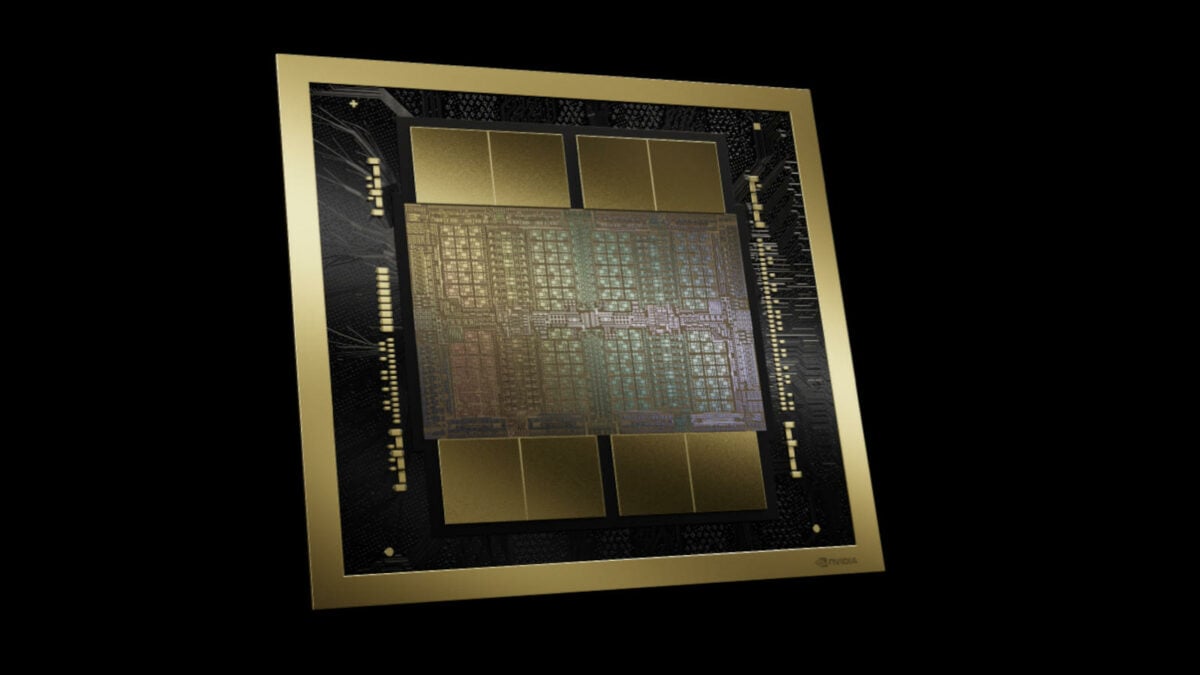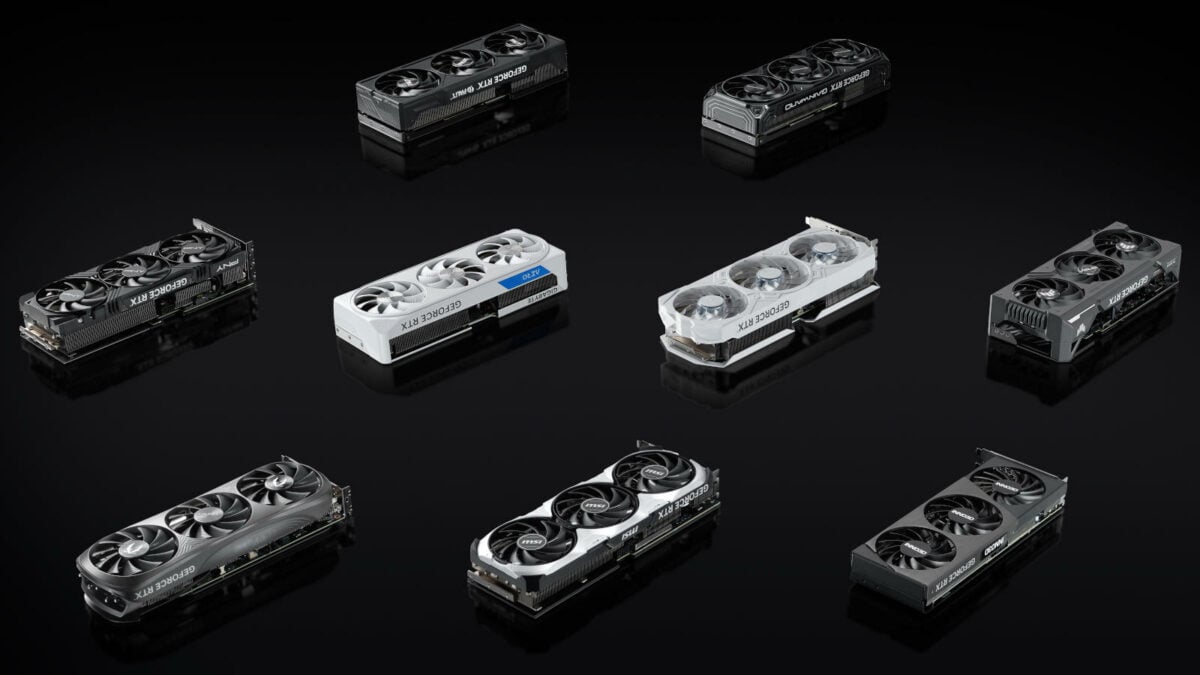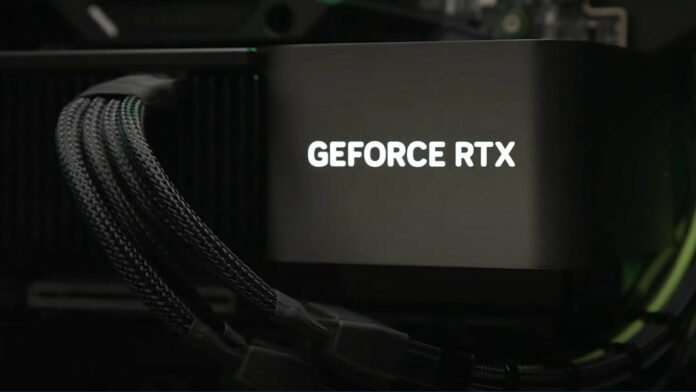Nvidia RTX 5000 series graphics cards are all but certain to succeed present-day pixel pushers. While Team Green remains largely tight lipped on its plans, leaks aplenty are filling the silence. Navigating through this quagmire of whispers, though, can prove difficult. As such, we’re only too happy to help you along with everything we know about the next generation of GeForce.
We expect the RTX 5000 series to boast the best graphics cards Nvidia has made to date. New GPUs, designed using the company’s Blackwell architecture, should bring a solid generational performance improvement. However, upgrades to video memory (VRAM) and other specifications could make for a more substantial uplift than expected. Suffice it to say, GeForce RTX 5090 will likely be a ferocious flagship.
We’ve got a lot of claims to chew over, with oh so many delicious details. Before we get stuck in, though, be sure to take every morsel of information ahead with a pinch of salt. We’re seasoned in every word here and experience has taught us to err on the side of scepticism at all times. With that said, we hope you’re hungry for the latest word on the Nvidia RTX 5000 series.

RTX 50 series release date
Nvidia has launched a new generation of GeForce graphics cards every two years, starting from its 900 series. With this in mind, wisdom dictates that the RTX 5000 series release date should fall in 2024. This would continue the established release cadence, as the RTX 4000 series hit the scene in 2022. However, there’s just as much chance of the company shaking things up this time around.
In support of the 2024 guestimate, reports indicate that the RTX 6000 series will enter mass production in 2026. Should these plans come to fruition, this would give the RTX 5000 series two years to enjoy its reign as Nvidia’s latest and greatest. Furthermore, whispers of a hurried development prompted by AMD and its potential to eat into the consumer AI market give this window further credence.
As for what graphics cards we can expect to see launch first, GeForce RTX 5090 or 5080 seem like the safest bets. Their predecessors, GeForce RTX 4090 and 4080 were the first to see the light of day, after all. However, it seems as though Nvidia plans to push GeForce RTX 5080 out the door first, mixing up previous strategies.
Should RTX 5000 series cards fail to emerge in 2024, we expect their arrival no later than Q1 2025. That said, we could very well end up with a Q4 2024 announcement before they arrive in the following quarter, as was the case for GeForce RTX 4070 Ti (of former RTX 4080 12GB infamy).

RTX 5000 series specs
None of the Nvidia RTX 5000 series specs are set in stone, nor will they be for a while yet. However, there are some likelihoods we can draw from industry trends and advancements, namely when it comes to VRAM. That’s not forgetting the numerous rumours and leaks flooding forums and social media, of course.
Nvidia will almost certainly leverage its Blackwell GPU architecture in service of RTX 5000 series graphics cards. Rumours surrounding the design of the GB202, presumed to power GeForce RTX 5090, suggest as much. In place of the monolithic dies we’ve come to expect, Team Green is allegedly adopting going the route of chiplets. So, this should lead to performance and efficiency gains compared to comparable RTX 4000 series offerings.
Sticking with GPU design, streaming multiprocessor (SM) counts, memory bus widths, and memory types for the GB200 series have leaked. If they hold water, GeForce RTX 5090 could have 192 SMs at its disposal. For context, AD102 only has 144, making for a 33% increase. Note, however, that similar gains are not present for every GPU. Furthermore, GeForce RTX 4090 uses a cutdown version of AD102 and only boasts 128 SMs, and a similar fate could befall the RTX 5000 series flagship. After all, where would the room be for GeForce RTX 5090 Ti or Titan?
| GPU | Streaming multiprocessors (SMs) | Memory bus width | Memory type |
|---|---|---|---|
| GB202 | 192 | 512-bit | GDDR7 |
| GB203 | 84 | 256-bit | GDDR7 |
| GB205 | 50 | 192-bit | GDDR7 |
| GB206 | 36 | 128-bit | GDDR7 |
| GB207 | 20 | 128-bit | GDDR6 |
As for VRAM, all signs point to most of the RTX 5000 series sporting GDDR7. As for how much memory each card will sport, rumours suggest GeForce RTX 5090 packs 28GB of the stuff, owing to its alleged 448-bit memory bus width (another cutdown from the full-fat GB202 experience). This should give it a 4GB advantage compared to its predecessor, and it should be much faster with 28Gbps modules under its heatsink.
All that performance will still require a lot of power, even with efficiency improvements. Nonetheless, Nvidia is supposedly testing RTX 5000 series GPUs paired with 250-600W coolers. Thankfully, Founders Edition versions of GeForce RTX 5090 should sport a dual-slot design. This is a surprising change of pace, or girth in this case, given how enormous GeForce RTX 4090 is.
With so much left up in the air, it’s impossible to deduce with any certainty how RTX 5000 series will perform. Nonetheless, rumour mongers peg GeForce RTX 5090 up to 70% faster than GeForce RTX 4090. If we’re honest, this feels like too large of a leap to be realistic, but we can all live in hope.

RTX 50 series pricing
We likely won’t know what Nvidia has planned for RTX 5000 series pricing until the company officially reveals its GeForce graphics cards. That said, the brand finds its finances in a much stronger state of health than ever before. While this doesn’t mean it will share the wealth by cutting costs for us consumers, Team Green certainly has more room to be benevolent. Realistically, though, we expect to see a range similar to the RTX 4000 series, putting things anywhere between $300 to $1,600.
Nvidia is now the most valuable company in the world, dominant in both data centre and consumer graphics. With no sizeable competition to stop it, it can effectively set its own terms for how it prices its devices. While AMD should nip at Team Green’s heels in the budget and midrange parts of the market, RDNA 4 needs to come out swinging if it has any hopes of dislodging the vice grip that the RTX 5000 series will inherit.
Pressure from Nvidia to increase its prices in order to protect profits could come from its manufacturing partners. More specifically, TSMC has teased potential rises targeted specifically at Team Green. It’s unclear if the company would take potential hikes on the chin, but it seems unlikely. This could result in higher costs to consumers or a reduction in specifications to accommodate budgets.
